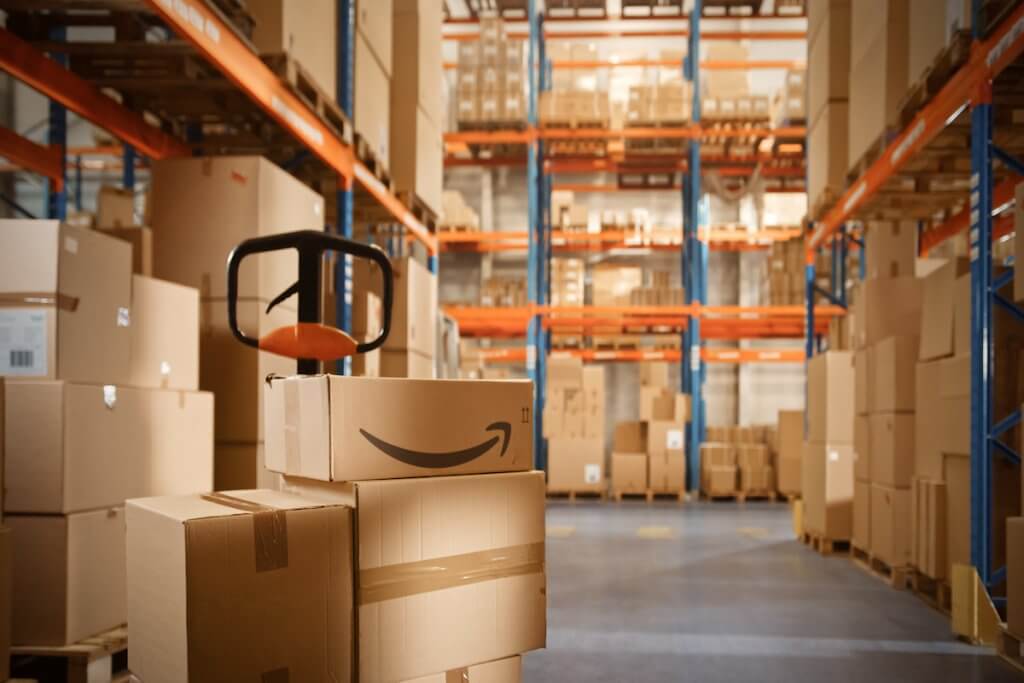A Beginner’s Guide to Shipping to Amazon FBA

Guest article from AMZScout on everything eCommerce sellers need to know about using the Fulfillment by Amazon program (Amazon FBA) to ship products.
Author: AMZScout
This post was written by the AMZScout Expert Team on Amazon trends, changes and daily seller needs. Their AMZScout research tool is one of the most popular tools for Amazon sellers, and has been available for more than four years now. They love to share their insights and fresh ideas about business on Amazon to guide online sellers to success.
With eCommerce currently booming, there are more and more people thinking about selling products online. However, there are a few hurdles you need to overcome when starting an eCommerce business. Two of the biggest ones are:
- Finding space to store all of your inventory.
- Finding the time to pack and ship all your orders.
Luckily, if you’re planning to sell on Amazon, there’s an easy solution to both of these issues.
The Fulfillment by Amazon (FBA) program allows you to ship all your inventory to one of their warehouses. Your items will then be stored there and Amazon will ship all your orders for you.
In this article, we’ll go over how to ship your products to Amazon FBA so you can run your eCommerce business from the comfort of your own home. Let’s jump right into it…
Choosing the Right Product
Before you think about shipping your inventory to Amazon, you need to decide what you’re going to sell. There are a number of factors that go into choosing a profitable product, but for the purposes of this article we’re going to focus on two things:
- Shipping costs
- FBA fees
Shipping costs are something you’ll have to think about if you’re participating in the FBA program, since you’ll have to send your products to Amazon. They’re also a major consideration if you’re buying inventory from an international supplier or wholesaler.
You also need to be aware of FBA fees. Amazon isn’t going to store your items for free. You’ll pay both storage fees and fulfilment fees when using the program, so you’ll need to factor these costs into your budget.
In both cases, the smaller and lighter your products are, the less you’ll pay. So, make sure these are two of your main criteria when thinking about what to sell. Remember, the fewer costs you have, the more profit there will be after each sale.
If you want to calculate what your costs will be on a product, try the FBA Revenue Calculator. After you install the extension, go to Amazon’s website and find the product you’re interested in. When you’re on the product page, open the estimator. Enter your product and shipping costs to get accurate revenue estimates. Your FBA fees will automatically be calculated.
Shipping Options: Which One Is Best?
Once you have your product, you’ll need to start thinking about how you’re going to ship it to Amazon. The process isn’t complicated, but there are some specific steps you’ll need to follow to ensure your inventory is accepted.
The first step is choosing your carrier. While you can technically use any service you like (couriers, USPS, etc.) Amazon has two partnered carriers:
- FedEx
- UPS
Because these services are partnered with Amazon, you’ll save a significant amount of money by using them. So, whenever possible, go with one of them. However, this cost savings is only available if you’re shipping from within the country. That means, if you’re having your inventory shipped directly from an international supplier, costs will be similar no matter what service you use.
Make sure to do your research and find the best deal available, as you want to minimize your shipping costs as much as possible.
How Much Does Shipping Cost?
Shipping prices vary widely based on what you’re shipping, how much you’re shipping, where you’re shipping from and where you’re shipping to.
That being said, here are some estimated costs for a few different scenarios:
- 1 20 lb box shipped from within the country: $10
- 5 10 lb boxes shipped from within the country: $30
- 1 50 lb box shipped from China to the U.S.: $200
- 2 30 lb boxes shipped from China to the U.S.: $900
If you trust your supplier to pack your boxes correctly, it will save you money to have your inventory shipped directly from them to Amazon. That way you’ll only pay the one shipping price.
Packaging & Labeling Your Products
Amazon has strict rules that must be followed when packing your items. Here are some simple rules to follow:
- Each product within your package must be labeled with a Fulfillment Network Stock Keeping Unit (FNSKU).
- Each product must have an easily accessible, scannable barcode (UPC, EAN, ASIN, or FNSKU).
- Any barcodes on the outside of your shipping box must be covered or rendered unscannable.
- All items must come fully assembled (Amazon will not assemble products for you).
- Products must either come in secured packaging or polybags.
- Products sold as sets should be packaged together so they can’t be separated. They must also be labeled as a set.
Make sure to follow Amazon’s guidelines exactly. Otherwise, your inventory won’t be accepted.
Creating Your Shipping Plan & Labels
When you’re ready to ship your products, go into your Seller Central account and create your listing. Once that’s complete, you’ll be able to create a shipping plan for your items.
Follow the steps outlined by Amazon. This includes letting Amazon know what you’re sending them, the number of products they’ll be receiving and the size and weight of your boxes.
After you’ve completed these steps, you’ll be able to print your shipping labels. You can either print these yourself or send them to your supplier if they’ll be shipping your items for you.
When labeling your shipments, ensure the FBA labels are the only ones visible so there is no confusion.
Common Mistakes Made by Sellers
As you can see, there are quite a few rules to follow. This often leads to mistakes during the shipping process.
Here are some common mistakes to avoid:
- Mislabeling Products: As mentioned earlier, each individual product needs to have a proper barcode. If they don’t your inventory will be denied, so ensure every item is labeled with the right barcode.
- No Barcodes: Even worse is not having any barcodes at all. This includes your products and your actual shipping box. This is how your items are entered into the Amazon system. Without them, your shipment will be invalid.
- Improper Packaging: Amazon has strict rules around the packaging of each individual product. If your items aren’t packaged correctly, not only will Amazon turn them away, but they may be damaged during shipping.
Conclusion
Amazon’s FBA program removes a lot of the barriers to entry for small individual sellers. If you can master product research and the process of shipping your items to Amazon, then there’s no reason why you can’t build a successful eCommerce business.




